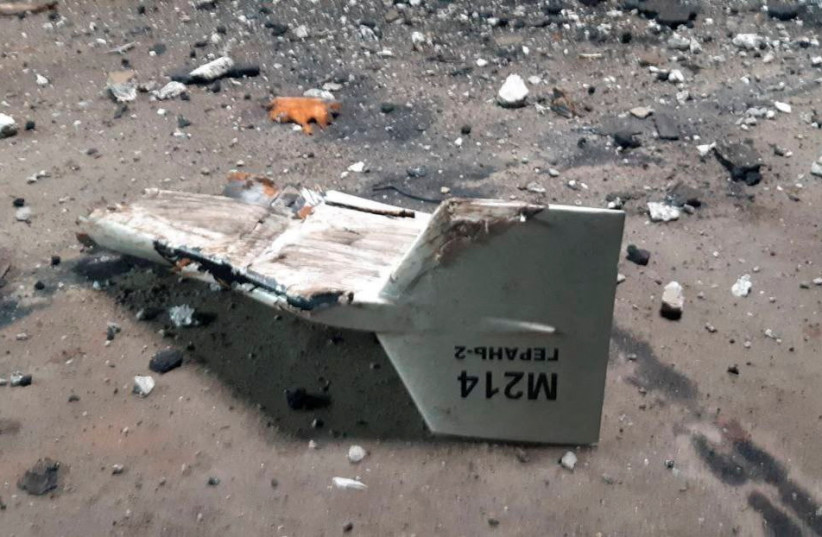Russia’s use of Iranian drones in Ukraine is growing and it is clear that the threat now must be taken seriously – not just in the Middle East or Ukraine, but on a global scale.
This is because Iranian-style drones have also been exported, either in pieces or their blueprints, to the Houthis in Yemen, Hezbollah and Hamas. They now have much larger ranges than in the past and new technology that enables more precise strikes.
<br><br>Russia's Iranian Kamikaze drones
The fact that Russia is openly using these types of “kamikaze” drones, or what are known as “loitering munitions,” shows that Iran’s drone program is now growing beyond something that is used by militant and terror groups.
According to reports on Thursday, Moscow used a "kamikaze" drone in an attack on the Kyiv region.
"Initial reports indicate a kamikaze drone attack. Rescuer teams have responded,” Ukrainian authorities said.

This type of drone, the Shahed-136, is now being used often in attacks by Russia, which may have ordered thousands of these drones, or is making them locally.
Not much is known about how Russia procures the drones or what it may have added to them. Nevertheless, it is clear from the tail numbers on those that have crashed, been downed or hit targets, that there are hundreds of these drones.
A report today at The Jerusalem Post noted that some 60% of the drones Russia has launched have been shot down or crashed.
Israel has been providing Ukraine with "basic intelligence" on the Iranian drones used by Russia in its invasion, The New York Times said on Wednesday.
This illustrates two key points. First, countries are now concerned about the proliferation of Iran’s armed drones. Russia is trying to wreak havoc with them and this harms civilians. In addition, the US and others have been concerned about Iran’s drones for years, especially in the Yemen war, Iraq and the Gulf.
<br>Expansion of the Iranian drone axis
The expansion of the Iran-Russia drone axis means that Iran’s drones may now be acquired by more countries, such as Ethiopia, Venezuela and the drones are apparently being made in Tajikistan.
With Iran’s attendance at meetings of the Conference on Interaction and Confidence Building Measures in Asia (CICA) this week in Kazakhstan and the Shanghai Cooperation Organisation (SCO) in Uzbekistan recently, its drones may find customers in even more countries in Asia, Africa, the Middle East and other places.
The call by Western countries to supply Ukraine with increased air defenses is also tied to the drone threat. It is Russia’s strikes on Ukrainian cities that are mobilizing the West to up support for Kyiv in the war in the air.
Stopping Russia’s drones – and in a sense stopping Iran’s drones – is therefore on the agenda of Western air defenders. US Central Command has warned for years about the growing drone threat.
The US military and Department of Defense are rushing ahead to field systems that can counter unmanned aerial systems. This includes the Joint Counter-small Unmanned Aircraft Systems Office (JCO), which leads and directs joint Counter-small Unmanned Aircraft Systems (C-sUAS). Other US defense offices, such as the DoD’s Irregular Warfare Technical Support Directorate (IWTSD), care about these issues as well.
Across the Western world, there is greater interest in drones and countering drone threats. US Central Command’s naval component, Navcent, also fields drones at sea – and the UAE and Gulf states are interested in countering the threats.
As the world watches the war in Ukraine, everyone is beginning to understand that drones are not just a growing threat, but that Iran’s are increasingly a threat to the region and the world.
